Voting system
Did you know in Queensland the way to vote is different in state and local government elections? Find out how our different voting systems work.
Full preferential voting
In a state election you must number all boxes in order of your preference, this is full preferential voting (FPV).
FPV means numbering every box on the ballot paper in your preferred order.
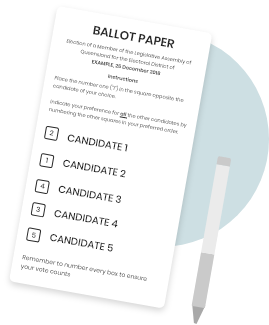
To cast a formal vote:
Voting instructions are always on the ballot paper and should be read carefully.
Step 1
place a one (1) in the box beside your first preference
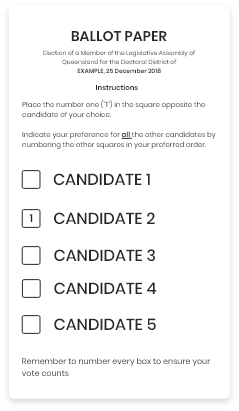
Step 2
a two (2) in the box beside your second preference
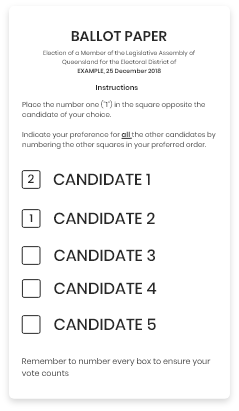
Step 3
a three (3) in the box beside your third preference
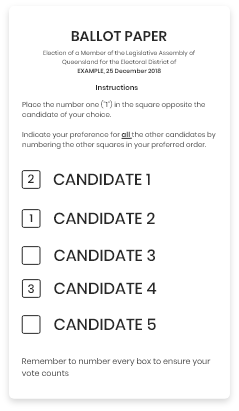
Step 4
continue numbering until all of the boxes are numbered.
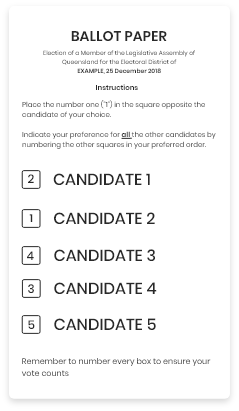
Counting a full preference vote
- The first step is checking each vote is formal by ensuring all the boxes are properly numbered on the ballot paper.
- Polling officials then count first preferences by looking for the number one (1) next to a candidate’s name and allocating the vote to that person.
- Next, the person with the lowest number of first preference votes is eliminated from the count and their second preferences are allocated to the remaining candidates.
- Now, the next person with the lowest number of votes is eliminated and their preferences are distributed.
- This process of elimination continues until just two candidates remain and one has the majority of votes.
- Once the result is clear, the Commission declares the successful candidate.

See our Multilingual Guide PDF (3.12 MB) for step-by-step voting instructions in 20 languages.
For information on the voting systems used for federal elections please visit the Australian Electoral Commission website.
Optional preferential voting
In a local government election for a single member divided council, and when voting for the mayor in all councils, you have the choice to vote for one, some or all candidates on the ballot paper; this is optional preferential voting (OPV).
OPV is the voting system used in Queensland to elect:
- Mayors in local government elections
- Councillors in local governments where single-member wards or divisions exist (single-member divided councils).
You can check which councils use optional preferential voting here.
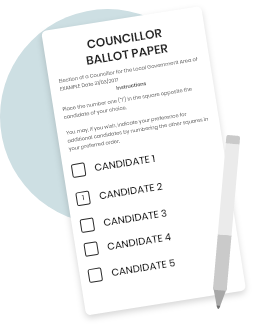
To cast a formal vote:
OPV requires an elector to mark the ballot paper to indicate their preference. Electors can choose to “vote for one, vote for some, or vote for all” candidates on the ballot paper.
Your preference order won't be automatically allocated; only you can decide where your preferences go. If the candidates you vote for are eliminated from the count, your vote will be exhausted.
Vote one
Vote for only one candidate by placing a one (1), tick or cross in the square opposite the name of your preferred candidate.
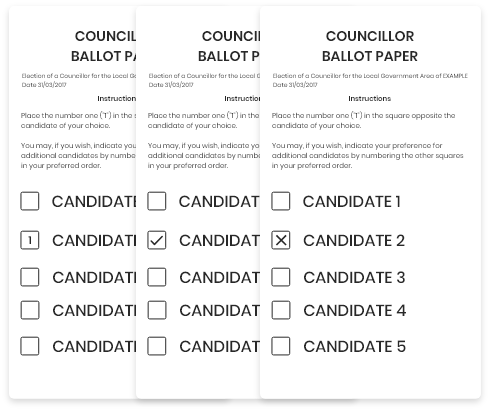
Vote for some or all
Vote for some or all by placing a one (1) in the box of your preferred candidate. You can then number some or all of remaining boxes in order of your preference according to the instructions on the ballot paper.
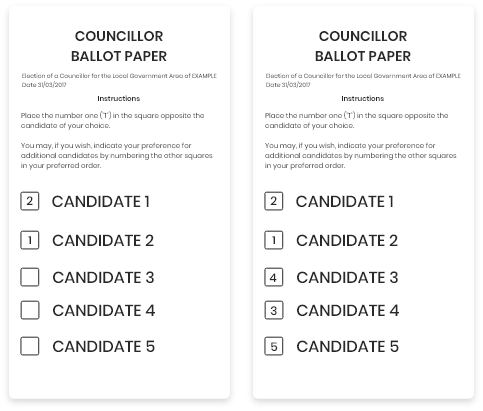
Counting the votes
The first step is to check each ballot paper is formal.
This means at least one first preference must be marked for a candidate.
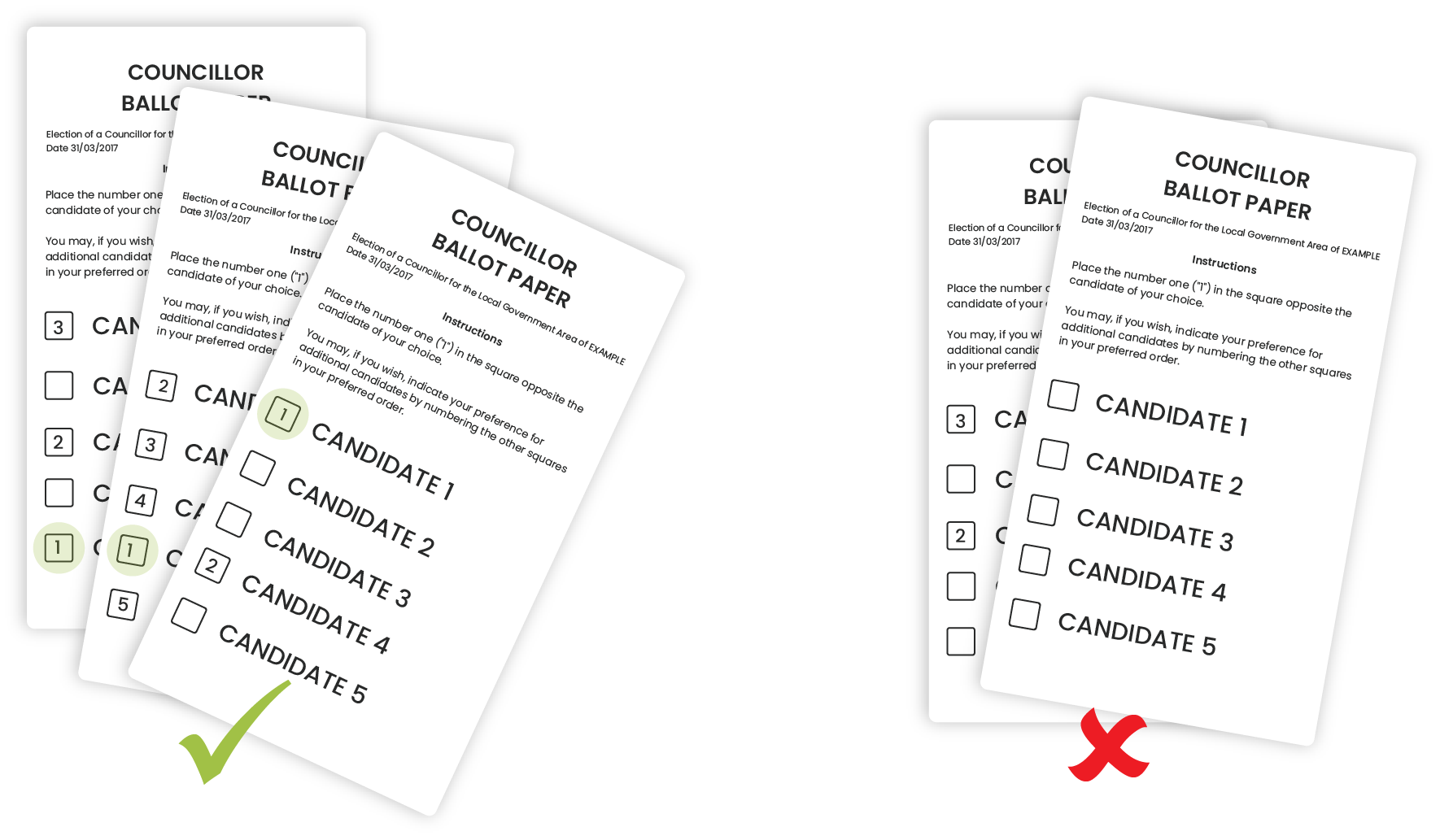
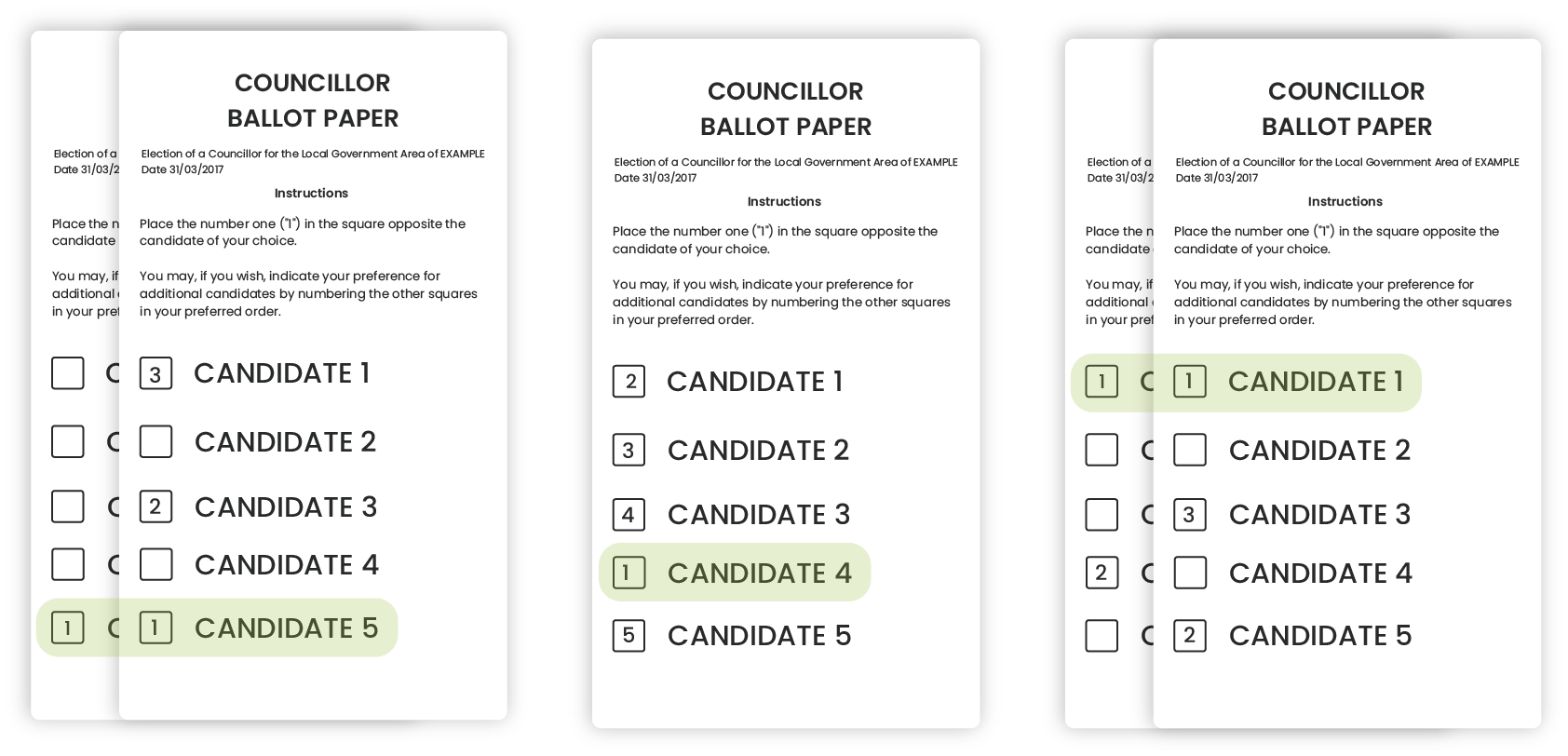
Then polling officials count the first preferences by looking for the numeral 1 (or other first preference mark) next to a candidate’s name on the ballot paper.
The vote is then allocated to that person.
The total number of first preference votes for each candidate is then tallied.
Next, the candidate with the lowest number of first preference votes overall is excluded from the count.
In the example below, that's 2 votes.
The voters’ second preferences on those ballot papers (if there are any) are allocated to the remaining candidates.
If there are no more preference marks for any of the remaining candidates, the ballot paper becomes ‘exhausted’ and has no further part in the count.

Now, the next candidate with the lowest number of votes overall is excluded.
In the example here, that's 6 votes.
The voters’ preferences (if any) are distributed to the remaining candidates. The exclusion process continues until just two candidates remain.

Once the result is clear, when no other outcome is mathematically possible, the ECQ declares the successful candidate.

First-past-the-post voting
In a local government election for an undivided council or multi-member divided council, you'll vote for your councillors using the first-past-the-post (FPTP) voting system. You'll mark the box next to the required number of candidates of your choice.
For example, if four candidates are to be elected to council, voters must mark four boxes on the ballot paper.
You can check which councils use first-past-the-post voting here.
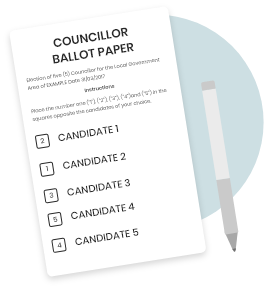
See our Multilingual Guide PDF (3.12 MB) for step-by-step voting instructions in 20 languages.
For information on the voting systems used for federal elections please visit the Australian Electoral Commission website.
Formal and informal votes
To ensure your vote counts, follow the instructions on the top of your ballot paper and complete it accordingly. This is called placing a formal vote. Only formal votes can be counted and contribute to the election result.
If a ballot paper isn't completed correctly, it's called an informal vote. An informal vote doesn't contribute to the election result.
A ballot paper may be deemed informal for a number of reasons including:
- it's blank or unmarked,
- ticks or crosses have been used when numbering in order of preference is required,
- the required number of boxes haven't been marked, or
- it has writing on it which identifies the elector.
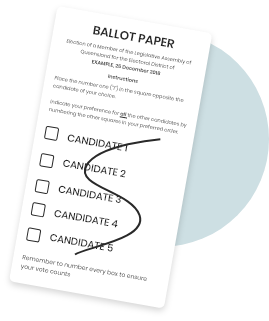
See our Multilingual Guide PDF (3.12 MB) for step-by-step voting instructions in 20 languages.
For information on the voting systems used for federal elections please visit the Australian Electoral Commission website.